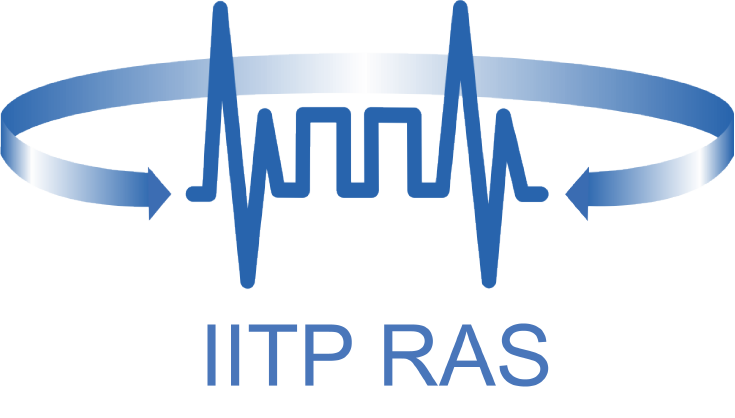MSU Annual Video Codecs Comparison 2020:
Call for codecs
All industry professionals will know about your codec success!

compression.ru |
in cooperation with |

|
Lomonosov MSU
Graphics & Media Lab (Video Group) |
Fifteen modern video codecs comparison
|

|
Dubna State University | |||

|
Institute for Information Transmission Problems, Russian Academy of Science |
Important update on comparison use-cases
Due to many requests, in this year encoders will be compared in slightly different conditions. Constant quality encoding mode (CRF, QP) is preferable (but it's still possible to participate with VBR mode). Participants are to provide encoding presets which produce bitrates and encoding speed similar to reference (x265) encoder: instruction for choosing encoding presets (PDF)
Encoding use cases to be compared in 2020:1. Main comparison (FullHD videos, objective quality metrics)
- "Real-time encoding" - 30fps, constant quality mode
- "Offline encoding" - 1fps, constant quality mode
- "Real-time encoding" - 30fps, constant quality mode
- "Offline encoding" - 1fps, constant quality mode
- "Fast encoding" - 1fps, constant quality mode
- "Universal encoding" - 20fps, constant quality mode
Important Dates
| May, 14 |
Application deadline |
Participants are to provide codec name, name of encoding standard, developer's (company) name, and list of comparison parts in which they want to participate
| May, 15 | Deadline for settling technical problems with codec functioning |
| August, 3 | Draft version of report that will be sent to all participants |
| August, 10 | Reception of comments to the draft |
| August-September | Main and Subjective reports release |
| November-December | 4K report release |
About Annual MSU Video Codecs Comparisons
MSU team has up to 21 years of experience in video codec analysis, testing and optimization. Some facts about previous MSU Video Codecs Comparisons:- There were more than 400.000 downloads of previous H.264/MPEG-4 AVC and H.265/HEVC video codec comparisons reports
- Many codecs' bugs were found and reported to developers
- 210+ encoders were tested
- More than 35 private reports for codec developers (description of codec's weak and strong points) after public report versions
Page Outline
- New in 2020 MSU Video Codecs Comparison
- Task of the Comparison
- Typical Scope of Test
- Summary report topics
- Comparison Rules and Methodology
- Participate in 2020 Video Codecs Comparison!
- What would you like to see in comparison reports?
- Special thanks to our sponsors
- Contact information
New features in MSU Video Codecs Comparison
| Since 2020 |
|
| Since 2019 |
|
| Since 2018 |
|
| Since 2017 |
|
| Since 2016 |
|
Task of the Comparison
We perform comparative unbiased analysis for
- software implementations
- hardware (GPU-based) implementations
- cloud-based implementations
With MSU Codecs Comparison developers can verify the performance of their codec. We share test sequences, encoding parameters and codecs versions so all developers can reproduce the results of the comparison. Participation with publishing of all results is for FREE.
Scope of Test
Summary report topics:- Objective measurements + Subjective analysis
- Encoding time
- Bitrate keeping for evaluating rate-control mechanism
- Speed/Quality trade-off analysis
- Averaged objective results analysis
- Leaders in different use-cases
-
50-100 HD video sequences (main report) + 10-12 4K&HDR video sequences (report appendix).
Number of videos may be increased and depends on the number of participating codecs - SSIM, PSNR, VMAF objective metrics & subjective evaluation
- Bitstream analysis; profile, latency and other restrictions control
- 3 color-planes (Y,U,V) and integral metric values
- 2 use-cases for comparison on FullHD videos: Fast and Offline encoding (differ by encoding speed) + 2 use-cases for subjective comparison on FullHD videos + 2 special use-cases for comparison on 4K videos
- 8-10 different target bitrates (1-12 Mbps for HD and 2-20 Mbps for 4K)
- Prosumer-level modern hardware
- Fully automatic testing system
- 7000+ result figures, PDF and HTML reports
Comparison Rules and Methodology
Please pay attention that we will use multi-core CPU for encoding, so you can use multi-threading
- Decoding is performed with reference decoder (for H.264/AVC and H.265/HEVC only). For other standards participants should provide decoder
- We don't limit GOP size and intra-period
- We don’t limit number of passes in the encoding. Total encoding time should fulfill use case speed requirements
- Constant quality mode is used during all tests (other modes are discussed individually)
- Before results publishing each developer will receive the results of its codec and competitive free open-source codecs. Developers of each codec can validate the results and write a comment (one paragraph) about the comparison results which will be included in the report
- Participation is free with publication of the results
- You can join comparison for free if you agree that your codec results will be published
- Private participation. Compare your codec with world leaders staying incognito! If your company wants to know results of your codec's testing with possibility to exclude them from publication and information disclosure, you should pay for measurements and report preparing before comparison begins
- Enterprise version of comparison report is available for direct participants for free
- All participants will receive following deliverables to verify the results for free:
- video sequences used in comparison
- binaries of all free encoders used in comparison to verify the results
- all raw video quality metric and encoding speed data for its encoder and for all of free encoders used in comparison
- We are willing to completely or partially delete information about some codec in the public version of comparison report only in exceptional cases (e.g. critical errors in the codec)
Test Hardware Characteristics
- CPU: Intel Socket 1151 Core i7 8700K (Coffee Lake) (3.7Ghz, 6C12T, TDP 95W)
- Mainboard: ASRock Z370M Pro4
- RAM: Crucial CT16G4DFD824A 2x16GB (totally 32 GB) DIMM DDR4 2400MHz CL15
- OS: Windows 10 x64 and Linux (Ubuntu)
Encoding speed requirements
All speed requirements are checked at video sequence encoded at 6Mbps:
- For objective quality comparison:
- Real-time – 1080p@30fps
- Offline – 1080p@1fps and SSIM-RD curve better than x264-veryslow
- For subjective quality comparison:
- Real-time – 1080p@30fps
- Offline – 1080p@1fps
- For objective quality comparison on 4K(UHD)&HDR videos:
- Fast – 20fps
- Universal – 1fps
Codec Requirements
Developers Deliverables
Full comparison methodology

Take part in 2020 Video Codecs Comparison!
Deepest codecs review: 5 reports, including subjective with 1000+ viewers and 7000+ charts
Applying for participating, you agree with comparison rules.
Contact  for participation.
for participation.
Please list the following:
- use cases you want to participate in (Real-time, Offline, Real-time subjective, Offline Subjective, 4K Universal, 4K Fast)
- codec name
- standard
- which codec version you want to submit (for Windows or for Linux)
- company name
- kind of participation (Free/public - we test your encoder and publish all results; or Private - you pay a participation fee, we test your encoder and send you the results, then you make the decision to publish results or not)
What would you like to see in MSU Codecs Comparison reports?
Thanks

|

|

|

|

|

|

|

|

|

|

|

|

|

|

|

|

|

|

|

|

|
Contact Information
 |
MSU video codecs comparisons resources:
- Introduction to Video Codecs Comparison
- Lossless Video Codecs Comparison 2004 (October 2004)
- MPEG-4 SP/ASP Video Codecs Comparison (March 2005)
- JPEG 2000 Image Codecs Comparison (September 2005)
- First Annual MPEG-4 AVC/ H.264 Video Codecs Comparison (January 2005)
- Second Annual MPEG-4 AVC/H.264 Video Codec Comparison (December 2005)
- Subjective Comparison of Modern Video Codecs (February 2006)
- MPEG-2 Video Decoders Comparison (May 2006)
- WMP and JPEG2000 Comparison (October 2006)
- Third Annual MPEG-4 AVC/H.264 Comparison (December 2006) (All versions for free!)
- Lossless Video Codecs Comparison 2007 (March 2007)
- Fourth Annual MPEG-4 AVC/H.264 Comparison (December 2007) (All versions for free!)
- Options Analysis of MPEG-4 AVC/H.264 Codec x264 (December 2008)
- Fifth MPEG-4 AVC/H.264 Comparison (May 2009) (All versions for free!)
- Sixth MPEG-4 AVC/H.264 Comparison (May 2010)
- Seventh MPEG-4 AVC/H.264 Comparison (May 2011)
- Eighth MPEG-4 AVC/H.264 Comparison (May 2012)
- Ninth MPEG-4 AVC/H.264 Comparison (Dec 2013)
- Tenth Video Codec Comparison (HEVC) (Oct 2015)
- Eleventh Video Codec Comparison (HEVC) (Aug 2016)
- Twelfth Video Codec Comparison (HEVC) (Aug 2017)
- Thirteen Video Codec Comparison (HEVC) (Aug 2018)
- Fourteen Video Codec Comparison (HEVC) (Sept 2019)
- Cloud Encoding Servoces Comparison 2019 (Dec 2019)
- Fifteen Video Codec Comparison (HEVC) (Dec 2020)
- Sixteen Video Codec Comparison (Dec 2021)
- Seventeen Video Codecs Comparisons (Nov 2022)
- Eighteen Video Codecs Comparisons
- Codec Analysis for Companies:
Other Materials
Video resources:
Server size: 8069 files, 1215Mb (Server statistics)
Project updated by
Server Team and
MSU Video Group
Project sponsored by YUVsoft Corp.
Project supported by MSU Graphics & Media Lab
